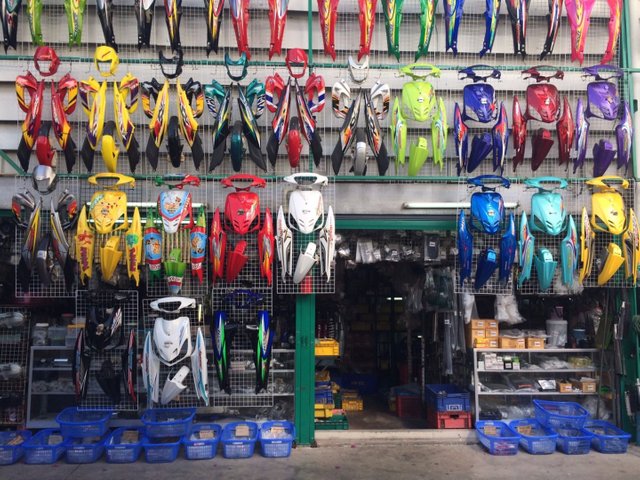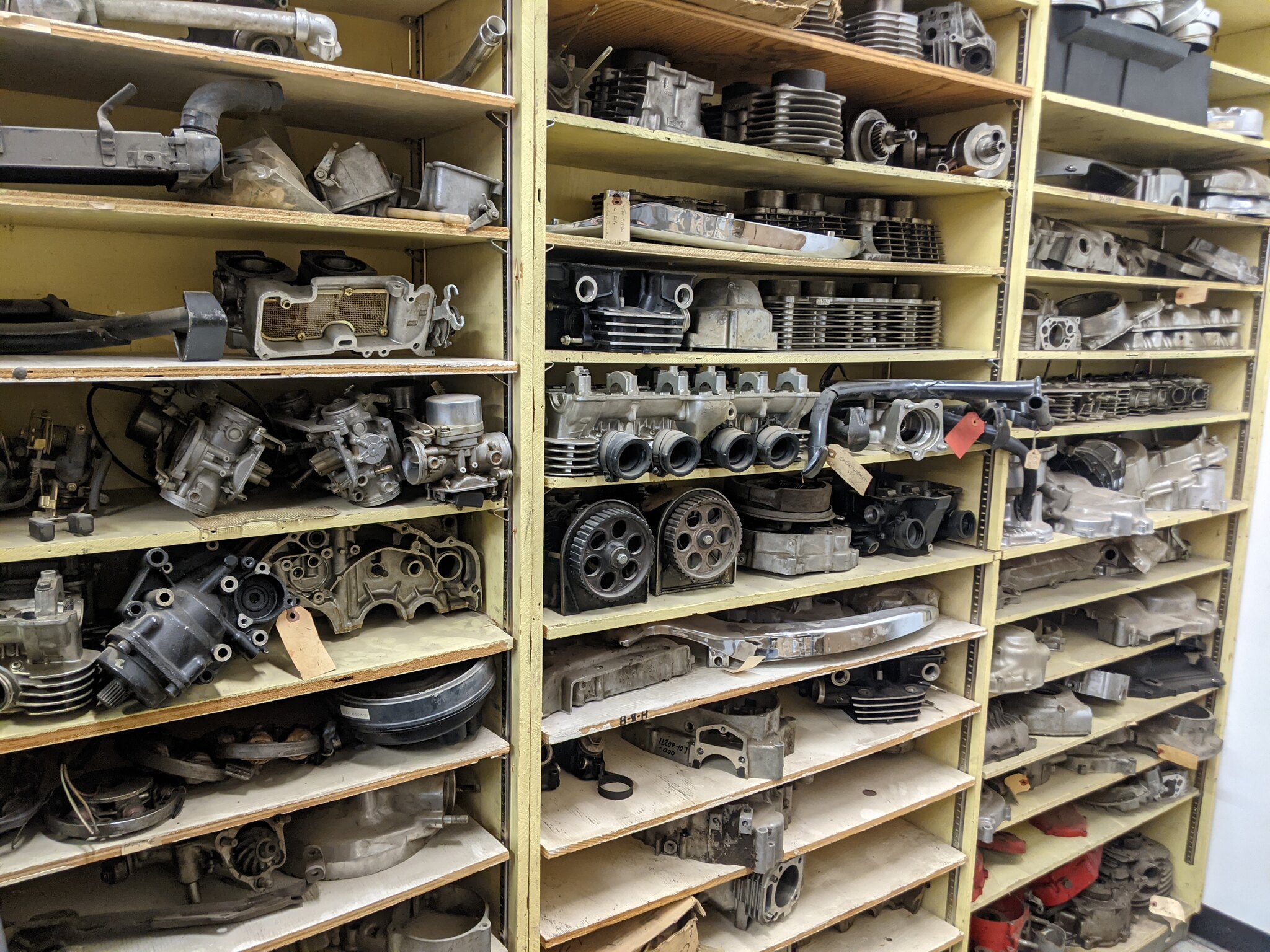Understanding the Crucial Parts of a Bike: A Comprehensive Guide for Lovers
For motorbike enthusiasts looking to elevate their riding experience and guarantee their bikes run efficiently, recognizing the vital elements of a motorcycle is vital. Each component, from the engine's elaborate workings to the crucial duty of the stopping mechanisms, not just influences performance however also security and convenience.
Engine Components

The camshaft plays an important function in managing the timing of the engine's shutoffs, making certain the accurate opening and closing necessary for efficient gas and air consumption, along with exhaust expulsion. This timing is essential to maintaining optimal engine efficiency and effectiveness. In addition, the carburetor or gas injection system, depending upon the bike version, is in charge of blending air with gas in the right ratio for combustion.
The air conditioning system, either air or liquid-based, functions to maintain the engine's temperature within functional restrictions, avoiding overheating and making certain durability - motocross parts nz. Each part, thoroughly created and incorporated, contributes to the seamless operation of the engine, defining the bike's power output and overall efficiency
Transmission System
Important to the bike's functionality, the transmission system makes sure reliable power transfer from the engine to the wheels. This system consists of several essential parts, including the clutch, transmission, and last drive, each playing an essential duty in translating the engine's power right into movement. The clutch, usually operated by a hand lever, serves to involve and disengage the engine from the transmission, enabling smooth gear adjustments and regulated acceleration.
The gearbox, frequently referred to as the transmission proper, contains a set of gears that riders can by hand shift with to change the bike's speed and torque outcome. These gears are prepared in a series that makes it possible for the bike to increase smoothly and maintain optimum engine performance across various speeds. Many motorcycles make use of a consecutive gearbox, requiring the rider to shift equipments in a predetermined order.
Braking Mechanisms
While understanding the transmission system is crucial to harnessing a motorcycle's power, similarly important is the capacity to manage and stop that power effectively, which is where stopping systems enter into play. Brakes are essential for safety and security and efficiency, providing the biker with the needed control to navigate various terrains and problems. Usually, motorbikes feature two kinds of braking systems: disc brakes and drum brakes.
Disc brakes are extra common in modern motorcycles because of their premium efficiency. They include a brake disc, caliper, and pads. When triggered, the caliper presses the brake pads against the rotating disc, converting kinetic power into warm, thereby slowing the wheel. This system supplies far better warmth dissipation, constant efficiency, and improved quiting power, specifically in damp problems.
Conversely, drum brakes, though much more info here less typical, are still discovered in some bikes. They function by pressing brake footwear versus the inner surface of a drum affixed to the wheel. While generally much less reliable in warm dissipation and quiting power, drum brakes are simpler and much more cost-efficient.
Comprehending these braking systems' subtleties allows motorcyclists to maintain their bikes appropriately and appreciate the design that makes sure safe and efficient quiting.
Suspension and Guiding
Suspension and steering systems are crucial components that considerably affect a motorbike's handling and ride comfort. The suspension system, consisting of forks at the front and shock absorbers at the rear, takes in roadway abnormalities, enhancing security and control. Front forks, normally telescopic or upside down, compress and rebound to minimize effects, while back shock absorbers preserve tire call with the road, critical for grip and safety.
Guiding, centered around the handlebars, connects the cyclist to the motorbike's directional control. The guiding head bearings guarantee smooth operation, enabling accurate ability to move. Proper positioning and upkeep of these bearings are essential for foreseeable guiding response and lowering rider exhaustion.
The suspension's adjustability is another crucial facet; preload, damping, and rebound setups enable modification to match various riding styles and conditions. This adaptability is important for maximizing efficiency, whether navigating city streets or tackling tough tracks. Advancements like electronic shock absorber use real-time changes, improving ride top quality throughout diverse surfaces.

Electric Systems
After making certain a smooth and controlled trip with effective suspension and steering systems, focus turns to the electrical systems, a pivotal facet of contemporary motorcycles. These systems play a critical duty not only in beginning the engine yet also in powering different parts that boost the capability and security of the motorcycle.
At the heart of a motorbike's electrical system is the battery, which stores electrical energy needed for starting the engine and powering supporting systems - mx parts nz. The alternator or generator, paired with the rectifier-regulator, makes sure the battery remains billed while the motorcycle is in procedure, transforming power into electrical power and maintaining voltage levels
The ignition system, one more essential part, is in charge of stiring up the air-fuel mix in the engine's cylinders. Modern motorcycles usually make use of an electronic ignition system, offering greater efficiency and reliability contrasted to standard systems.
Lights systems, including fronts lights, tail lights, and indicators, are also essential, guaranteeing visibility and safety for the biker. Extra digital components such as sensors, control devices, and displays add to sophisticated functions like fuel shot monitoring, anti-lock braking systems (ABDOMINAL), and electronic control panels, additionally improving the riding experience.
Verdict
A complete comprehension of a motorbike's necessary components, consisting of the engine, transmission system, braking devices, suspension, guiding, and electric systems, is indispensable for lovers intending to enhance security, comfort, and performance. Mastery of these elements enables notified choices concerning upkeep and upgrades, ultimately improving the riding experience. By incorporating this knowledge, bikers can ensure their bikes operate at peak performance and dependability, thus taking full advantage of explanation both satisfaction and durability of their lorries.
For motorbike enthusiasts looking to raise their riding experience and guarantee their bikes run smoothly, recognizing the crucial components of a motorcycle is vital.Integral to the motorbike's performance, the transmission system makes sure effective power transfer from the engine to the wheels.While understanding the transmission system is essential to utilizing a motorcycle's power, just as important is the ability to manage and quit that power effectively, which is where braking mechanisms come right into play. Typically, bikes include 2 kinds of braking systems: disc brakes and drum brakes.
A comprehensive understanding of a motorcycle's find this necessary components, consisting of the engine, transmission system, stopping mechanisms, suspension, guiding, and electric systems, is essential for lovers intending to optimize performance, security, and convenience.